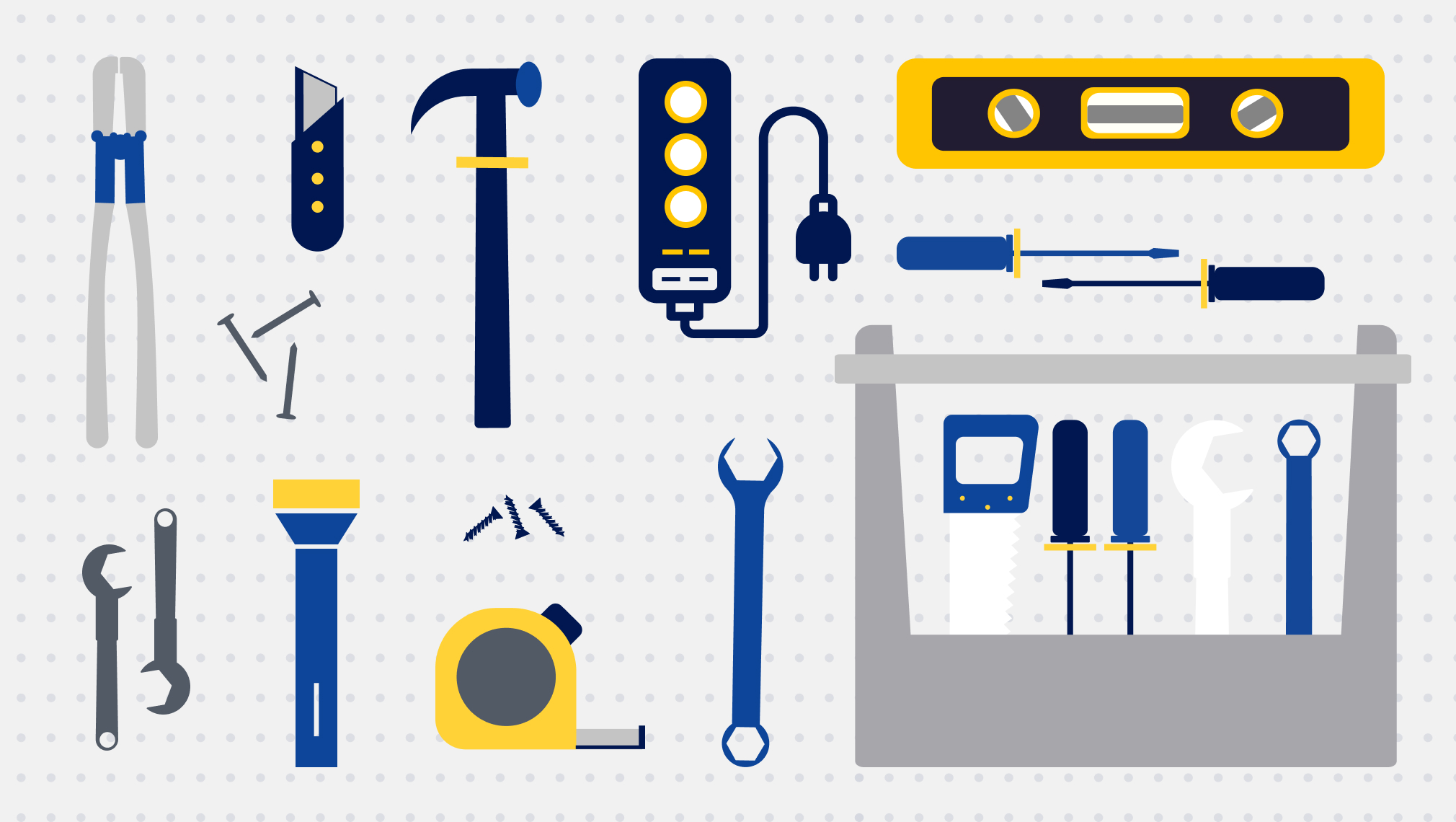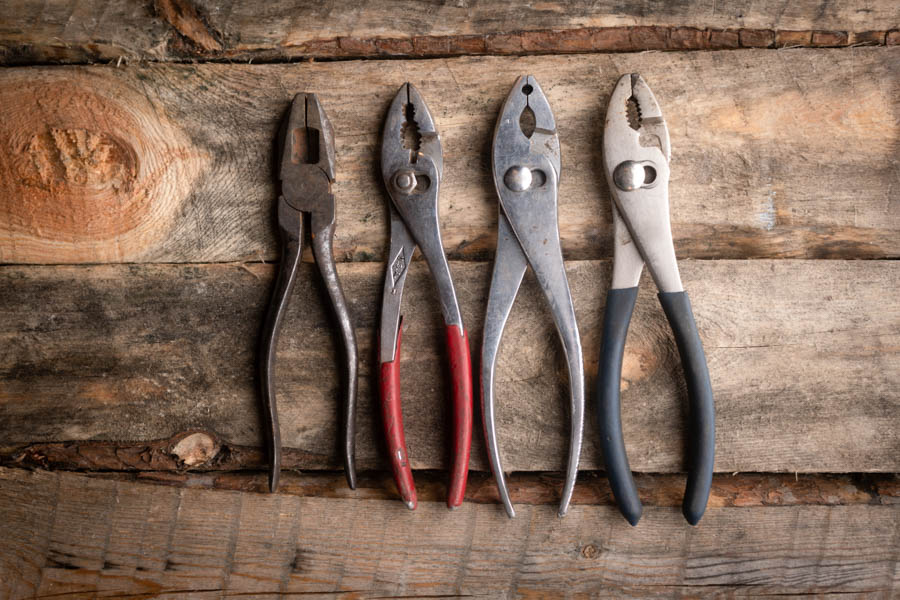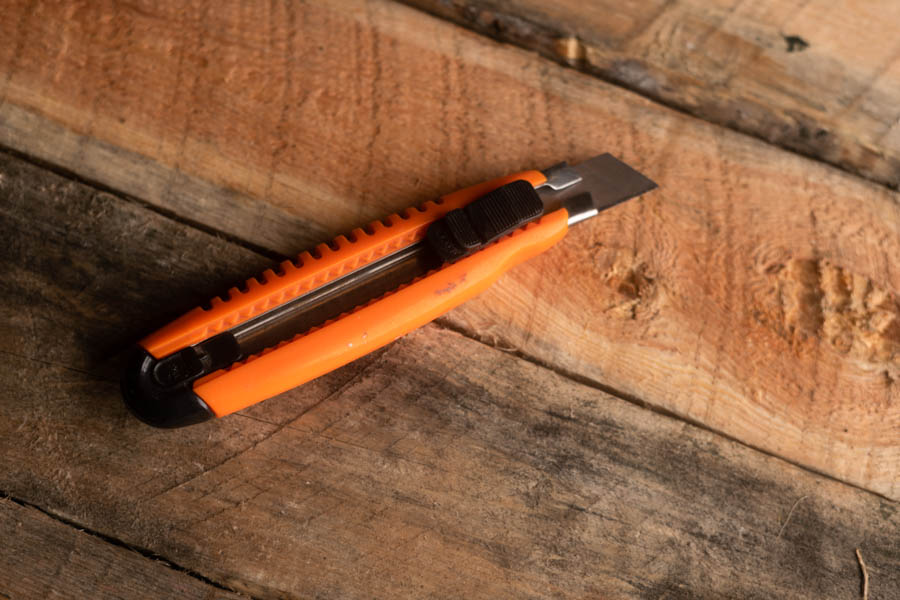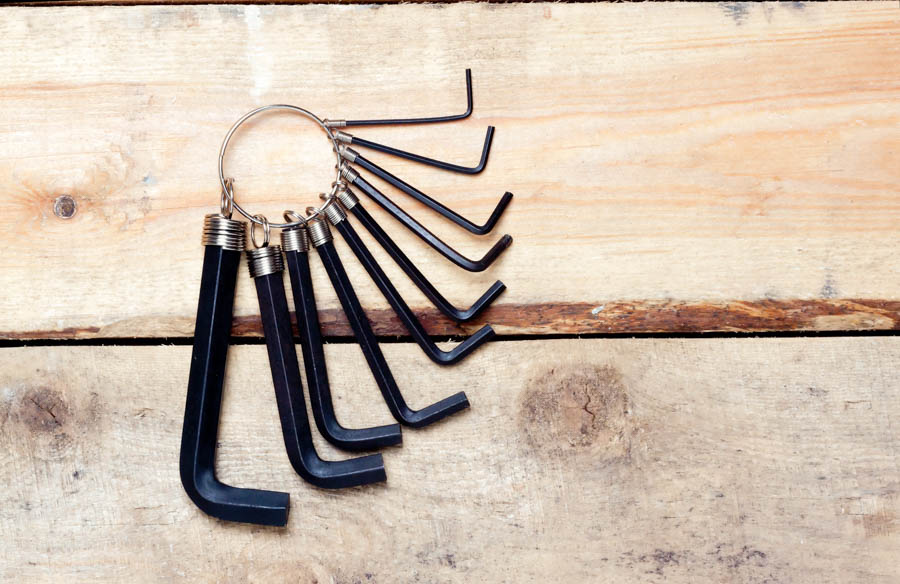Whether you just bought a house or want to upgrade your tired tool kit, use this guide to nail down the essentials.

There’s something empowering about having your own set of tools to take care of the home you own. Having a well-stocked toolbox can be liberating — it means you don’t have to call a handyman or a friend to tighten a loose cabinet pull or assemble the bookshelves you just bought. So, which tools should you start with? We consulted a few tool experts and home improvement influencers, and here are the essential tools for homeowners they recommend.
1. Hammer
A hammer is the hardest working tool you’ll ever own. And it should be at the top of your list of tools every homeowner needs. You can use it to hit nails, of course, but you can also use a hammer to pound the lid shut on a paint can, tap a picture hanging hook into the wall or drive a wooden stake in your garden to prop up tomatoes. There’s a slew of hammer types, but get a claw hammer, which can handle most household repairs. Claw hammers can weigh as much as two pounds, but leave those to professionals who frame houses for a living. You want a hammer that weighs around a pound.
2. Socket wrench set
A socket wrench is basically a wrench with multiple heads. Instead of buying a bunch of conventional wrenches in a range of sizes, get a socket wrench set. You get a single handle and a set of sockets that will tackle almost any household task. Best of all, socket wrenches have a ratcheting handle so you can turn a bolt or nut more quickly. No need to move the tool as you turn the fastener. A set of 25 sockets is plenty for a starter kit.

3. Tape measure
Tape measures are the second most essential tool for homeowners. Get one that is 25 feet long so you can measure big and little stuff. Look for a tape measure that’s marked for fractions of an inch — down to 1/16 is best — so you can measure with precision. You can also get digital tape measures that will read the measurement for you and display it on an LCD screen. Laser tape measures use a beam of light, not the traditional metal retractable ruler, to take a measurement. They can even measure around a corner, no awkward bending of metal tape or math necessary.
6. 4-in-1 screwdriver
Instead of buying a set of screwdrivers, opt for this affordable tool that does the work of four screwdrivers. It comes with two pairs of double-ended heads (called bits) that can be swapped out of the screwdriver handle. One head has two flat-head tips, and the other has two Phillips heads. You can do everything from tightening a hinge to assembling furniture with a 4-in-1.
7. Level

Get two. No need to eyeball in and up with pictures hung askew and sloping shelves. A small one, 9 to 12 inches long, is useful for hanging pictures or mounting shelves, and a middle-sized one, 2 feet long, is good for bigger jobs like laying outdoor pavers or hanging cabinets.
8. Stud finder
Studs are the wood beams that hold up your walls. When you hang a heavy framed photo or a shelf holding heavy items, you need to find a stud because it will hold a screw or nail more securely than the drywall. A magnetic stud finder can do just that, locate a wood beam behind the drywall by sensing the metal nails that hold them in place.
9. Flashlight
You can’t fix or install what you can’t see. Add a portable light source to your toolbox in the form of an LED flashlight. Look for one that’s small (8 to 10 inches long) but powerful and has a long runtime on standard batteries. Get one with a water-resistant plastic case so it can withstand humidity. Keep a spare set of batteries in the toolbox at all times.
4. Pliers

Opt for a three-piece set that includes slip-joint, needle-nose and diagonal pliers so you can get a grip on whatever you need to work on. Use pliers for tightening bolts, removing nails or bending wire.
5. Tongue and groove pliers
Get these pliers in addition to the three-piece set. Their big jaws (think giant slip-joint pliers) are useful for gripping pipes, fittings, fasteners and other large items. You can use tongue and groove pliers to change a shower head, disconnect your washing machine or make basic plumbing repairs.
11. Nails and screws
Buy one box each of assorted nails and screws, so you are ready for any household task, from hanging a picture to repairing the deck. Look for assortments that include 6 to 10 types of nails and screws. A picture hanging kit — an assortment of nails, screw eyes and hanging wire — is also good to keep on hand.
12. Utility knife

All that online shopping you’ll be doing to furnish and decorate your new house means you’ll be opening a lot of boxes. Don’t do it with a bread knife. Get a utility knife with a retractable blade that can be replaced. This little tool can cut cardboard, heavy-duty tape, rope and carpeting, strip cable insulation, scratch out old grout or caulk and more.
13. Multi-tool
This multipurpose gadget has between 9 and 21 tools, depending on the model. Most multi-tools have pliers, a knife, a ruler, scissors and a screwdriver or two. Higher-end models have a pry tool, saw, awl, wire cutters and lots of screwdrivers. Multi-tools have been a staple camping accessory for generations, but it’s a good idea to put one in your home toolbox because they can fill gaps in your tool arsenal.
14. Duct tape
This heavy-duty adhesive tape is a jack of all trades and has a recurring role on lists of tools every homeowner needs. It can keep loops of extension cords under control, patch a rip in patio furniture, repair a leaky garden hose or get dog hair off the sofa. It comes in a ton of colors and patterns, so your fast repair can be made with tie-dye or puppy print duct tape, not just industrial silver.
10. Allen wrench set

You know those little L-shaped metal tools that come with Ikea furniture? They’re called Allen wrenches — or hex keys — and you should get a whole set of them so you always have the one you need for any job. You can use Allen wrenches to turn bolts and screws with hexagon-shaped sockets, so they’re good for putting together furniture, working on appliances, repairing power tools, tightening towel bars or toilet paper holders or repairing a faucet. You can even use an Allen wrench to pick your lock if you lock yourself out of your house.
15. Cordless drill
Battery-powered drills are the best power tool to have in your arsenal of essentials. We suggest getting one with interchangeable tips so it can double as a screwdriver. Get a full set of tips — called bits — that includes a drill tip, screwdriver, hex head and star head so you can do any job you need to do, from screwing hangers for heavy pictures into wall studs to assembling furniture. A cordless drill is much more efficient than a screwdriver you turn by hand. Most come with rechargeable batteries that will run for hours on a charge.
16. Lubricating oil
So much depends on having this handy: a spray can of lubricant anti-corrosives that can stop doors from squeaking, garden shears from rusting, loosen an uncooperative door lock and unstick stuck zippers. This stuff is a miracle in a can and is one of the essential tools for homeowners.
17. Extension cord
Bring the power where you need it, whether to a drill or a string of lights on the patio. An extension cord can keep you from ever being too far from an electric outlet to get work done. Cords come in light-, medium- and heavy-duty based on how much electricity they can handle. A medium-duty extension cord can handle most household needs, like powering a lamp or television or running a couple of small power tools.
18. Toolbox

Now that you have the tools every homeowner needs, you need a container to store them in so you aren’t rummaging around the storage room looking for a hex key when the towel rack falls off the wall. Use one of those plastic, five-gallon buckets the big box hardware stores sell, a big duffle bag or go for a retro metal toolbox like the one your grandpa had. The idea is you want your tools in one place so you can grab them and take them to the scene of the needed repair.

